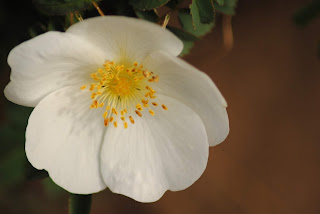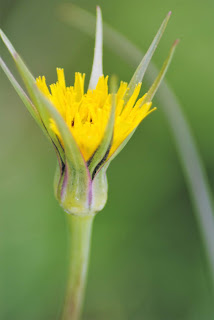Morning at Broughton on the Gower. Lots of flowers including a Forgetmenot (Myosotis stricta); a Vetch (Vicia dumetorum); Hairy rockcress (Arabis hirsuta); Black medick (Medicago lupulina); White clover (Trifolium repens); Goatsbeard (Tragapogon pratensis); Stone bramble (Rubus saxatilis); Sweet violet (Viola odorata); Wild pansy (Viola tricolor); Kidney vetch (Anthyllis vulneraria); Burnet rose (Rosa pimpinellifolia); Long-stalked cranesbill (Geranium columbinum); Field gentian (Gentianella campestris); Lesser hawksbit (Leontodon taraxacoides); Bloody cranesbill (Geranium sanguineum); Houndstongue (Cynoglossum officinale); Scarlet pimpernel (Anagallis arvensis); Cowslip (Primula veris); Biting stonecrop (Sedum acre) and Sea spurge (Euphorbia paralias). Critters included Great green bush-cricket nymphs (Tettigonia veridissima); Diptera (unidentified) mating or cannibalising?; St Marks fly (Bibio marci); Lackey moth (Malacosoma neustria) larvae on Hawthorn; Cinnabar moth (Tyria jacobaeae) as well as male and female Small blue butterflies (Cupido minimus).
This blog may help people explore some of the 'hidden' issues involved in certain media treatments of environmental and scientific issues. Using personal digital images, it's also intended to emphasise seasonal (and other) changes in natural history of the Swansea (South Wales) area. The material should help participants in field-based modules and people generally interested in the natural world. The views are wholly those of the author.
Sunday, 20 May 2018
Seeing the Changes 1298
Morning at Broughton on the Gower. Lots of flowers including a Forgetmenot (Myosotis stricta); a Vetch (Vicia dumetorum); Hairy rockcress (Arabis hirsuta); Black medick (Medicago lupulina); White clover (Trifolium repens); Goatsbeard (Tragapogon pratensis); Stone bramble (Rubus saxatilis); Sweet violet (Viola odorata); Wild pansy (Viola tricolor); Kidney vetch (Anthyllis vulneraria); Burnet rose (Rosa pimpinellifolia); Long-stalked cranesbill (Geranium columbinum); Field gentian (Gentianella campestris); Lesser hawksbit (Leontodon taraxacoides); Bloody cranesbill (Geranium sanguineum); Houndstongue (Cynoglossum officinale); Scarlet pimpernel (Anagallis arvensis); Cowslip (Primula veris); Biting stonecrop (Sedum acre) and Sea spurge (Euphorbia paralias). Critters included Great green bush-cricket nymphs (Tettigonia veridissima); Diptera (unidentified) mating or cannibalising?; St Marks fly (Bibio marci); Lackey moth (Malacosoma neustria) larvae on Hawthorn; Cinnabar moth (Tyria jacobaeae) as well as male and female Small blue butterflies (Cupido minimus).
Subscribe to:
Post Comments (Atom)
-
I n the UK and US, a pparently popular and successful vegan/vegetarian restaurants are reportedly closing or adding meat to their menus ( ...
-
Early ripening fruit may seem convenient but some folk think it confirms environmental stress. There's also a possibility th...




























%20mating%20NWCW.jpg)


No comments:
Post a Comment